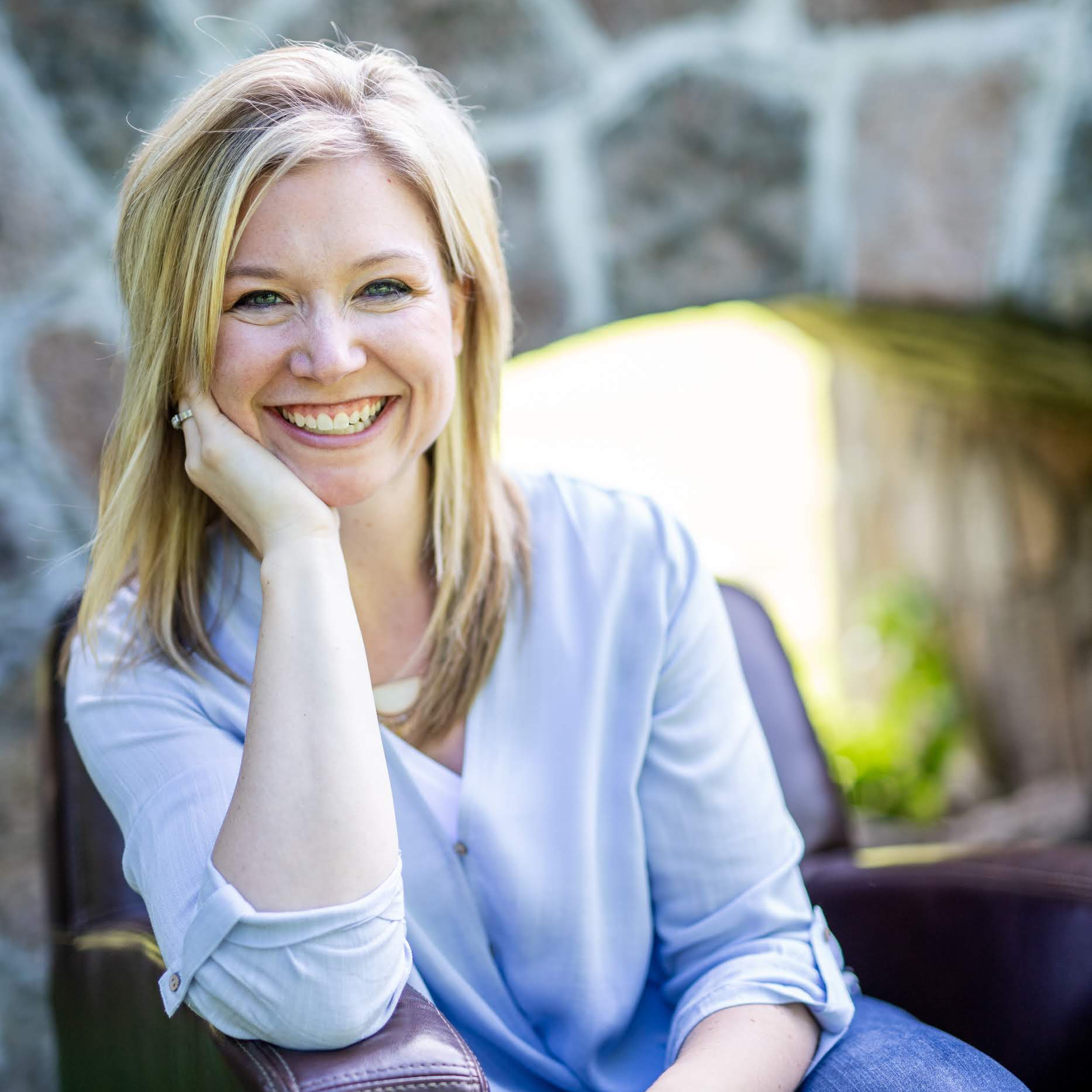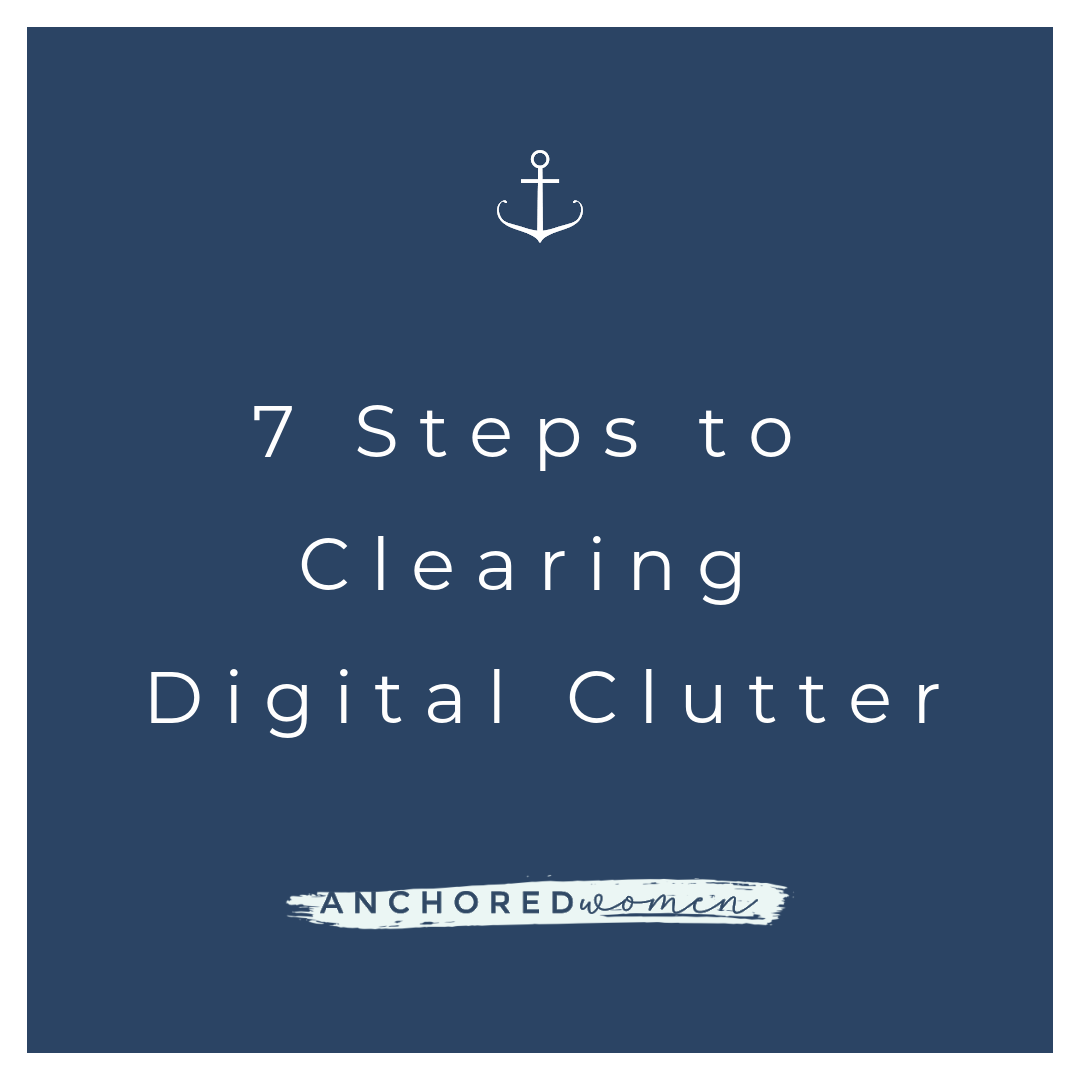7 Steps to Clearing Digital Clutter
Glancing at my inbox, I noted the unread messages: 5,293. Five thousand messages! And those were just the ones I hadn’t opened at some point. Thousands of messages that I’ve ignored, decided to deal with later, or simply forgotten about over time.
I ignored my disorganized inbox until I read an astonishing statistic: Each time we’re interrupted by an incoming email, it takes us an average of 23 minutes and 15 seconds to return to our original task. (link) With work, family, and social commitments, most of us simply don’t have that kind of time to waste.
If you’ve ever found yourself in desperate need of clearing the digital clutter but are unsure where to start—as I was—here’s a step-by-step way to get rid of unnecessary emails and create a plan moving forward.
CLEAR THE DIGITAL CLUTTER
First, spend some time sorting your inbox. When I first started combing through my emails, I set a timer for 20 minutes and did as much as I could during that time. I then repeated the 20-minute exercise any time I had an open gap in my schedule.
- Begin by sorting your inbox by sender/name. This allows you to go through and quickly identify and delete any old advertisements or newsletters that were overlooked. If you want to clear all items from a specific sender, search online for “Eliminate email in bulk” to get quick, easy directions that are specific to your email service.
- Go through your subscriptions. If you have Outlook, searching under “Settings” should lead you to a category labeled “Subscriptions.” This alphabetized list shows you how many subscriptions you have and allows you to easily unsubscribe from those you no longer wish to receive. I’m a little embarrassed to admit that I began with 608 subscriptions! By the time I was done, I only had a fraction of them left.
- Thoughtfully consider what’s actually worth keeping. There are certain things we need to keep, like specific financial items and current work projects. If you have folders, you can file those items away—for now. In the next step, you may want to consider streamlining your folders a bit.
CREATING A DIGITAL PLAN MOVING FORWARD
One study found that adults who check their email infrequently have less stress, better work performance, and an improved sense of well-being. With that in mind, here are are a few tips to keep email from taking a toll by streamlining the process:
- Have a few folders—but not too many. Once you’ve analyzed your inbox, you’ll be able to implement a plan going forward. The number of folders will vary from person to person. For instance, my folders consist of the following:
- Work (with subfolders for each of the major organizations or projects I currently have, usually about 3-4)
- House (subfolders: Donations, Courses & Classes, School)
- Action (items I need to deal with before deleting or filing elsewhere, as well as an Appointments subfolder)
- “Stuff to Read” (newsletters I’m interested in perusing but don’t have the time, articles that piqued my interest, or recipes. When I have a few spare minutes, I hop into that folder and read through items, then delete them)
- Decide on a few times a day when you check email and respond to messages—for instance, checking email once in the morning, once in the afternoon, and once before finishing your work for the day. Doing so will help you be more productive with your overall work time, as well as establish expectations for others on when you will get back to them. There’s no need to respond to every email immediately—doing so creates the assumption of an instantaneous reply. Another idea to consider is to purposely respond to email when your time and energy are flagging (typically 1-2 p.m.) in order to save your high-energy time for more valuable work.
- Limit distractions. As noted, it takes more than 26 minutes, on average, for us to return to a task when we’re distracted. If you’re focusing on responding to emails, mute your phone or—better yet—leave it in a different room or place it in a drawer.
- Utilize your out-of-office reply. It’s tempting to check email on weekends or when spending time with our families (for instance, any time my girls want to watch a Barbie movie I’m tempted to dive into emails and social media to escape). Regardless of whether you work at an office or from home, have a part-time gig or just need some space, utilize the out-of-office reply. Other people will understand that you are unavailable and you’ll feel less stressed knowing that the work is waiting for you when you’re ready for it.
It can feel overwhelming, at first, to get a handle on the constant stream of emails arriving in our inbox. But I’m happy to report that the work paid off: My inbox is now less cluttered, and as a result, I’m less stressed about my inbox.
How about you—does email stress you out or is it something to enjoy? What are your best tips for dealing with email clutter?

A career in journalism set Kristin Demery up to publish her own stories of living this wild, precious life. She now is an author of five truth-telling books, including the latest 100 Days of Kindness, and part of a trio of writers collectively known as The Ruth Experience. Kristin served as a newspaper and magazine editor and her work has been featured in a variety of publications, including USA Today. She still works behind-the-scenes as an editor for others while writing her own series on kindness, friendship, and living with intention. Find more from Kristin at theruthexperience.com.


